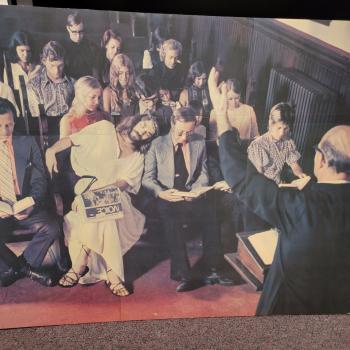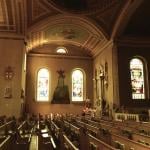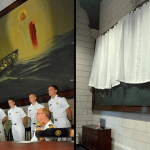Certainly some of the most spectacular of the things to be seen in the Getty museum are the statues. The most famous piece in the entire Getty collection is the so-called Landsdowne Herakles seen to the right, which unlike many objects in this collection actually has a provenance. It comes ultimately from Tivoli, and dates to about 125 A.D. or so. It typically depicts Herakles in the process of undertaking some of his herculean labors that the gods insisted he do.
 In some respects the Getty museum is famous for all the wrong reasons. It reflects the period of collecting by the wealthy in the 20th century who were apt to buy impressive looking objects without knowing, or caring about their original provenance. By provenance I mean where it originally comes from. If an artifact is not found in the earth at an archaeological site, then more often than not it’s history is not known, and it may well be a forgery. In fact, various objects in the Getty museum may be modern forgeries. Take for instance the Kouros statue which is spectacularly well preserved. Some would say too well preserved. And there is another problem. In the twentieth century there was also a lot of restoration work done to famous statues. By restoration I mean even extreme efforts— such as placing a new head on a previously headless ancient statue, based on other similar statues. Curators and lovers of art have long debated the merits of restoration, because of course the work is no longer solely an ancient masterpiece if you restore it.
In some respects the Getty museum is famous for all the wrong reasons. It reflects the period of collecting by the wealthy in the 20th century who were apt to buy impressive looking objects without knowing, or caring about their original provenance. By provenance I mean where it originally comes from. If an artifact is not found in the earth at an archaeological site, then more often than not it’s history is not known, and it may well be a forgery. In fact, various objects in the Getty museum may be modern forgeries. Take for instance the Kouros statue which is spectacularly well preserved. Some would say too well preserved. And there is another problem. In the twentieth century there was also a lot of restoration work done to famous statues. By restoration I mean even extreme efforts— such as placing a new head on a previously headless ancient statue, based on other similar statues. Curators and lovers of art have long debated the merits of restoration, because of course the work is no longer solely an ancient masterpiece if you restore it. 
One of my clear favorites which is clearly and entirely an ancient object is the ‘herm’ (so called after the god Hermes, the messenger of the gods), which in this case gives us an image of Dionysius with a turban on his head. The herm had a specific function beyond being a work of art— it was a talisman meant to ward off intruders and evil spirits and the like. Typically, a herm would have a head on top of a marble column in the middle of which would be the male genitals of the herm in question. Poor herm. The point of displaying the genitalia was it was a symbol of power, the idea being the house was protected by divine power (sort of like the ancient equivalent of a security system). This herm is from Greece, perhaps about 100 B.C. and the name of the artist is on the back in Greek- Boethos.
Some of the statues in the museum were in fact very small indeed, and could sit on a nightstand. Below you find a small statue of the goddess Nike (pronounced knee-cay) the goddess of winged victory. This one comes from southern Italy but it is clearly Greek and dates to perhaps 500 B.C. Interestingly, this Nike has a structural function, supporting a small incense burner, with a dove on top. Burning incense was both a means and a symbol of praying to some god, in this case Nike for some sort of success or victory. 
Sometimes statues come in the form of busts, such as the bust below of a small child. The bronze statue below is from Greece perhaps as early as 300 B.C. Bronze was the metal of choice for such metal statues as it was malleable. Corinth in Paul’s day was famous for its bronze works (remember 1 Cor. 13– sounding bronze and clashing cymbal). Works of art were usually created for rulers or for the wealthy, or for cities trying to display their aesthetic prowess and improve their honor ratings. Yes, cities had honor ratings in antiquity like persons did (see for example what Luke says in Acts 16 about Philippi).
The bronze statue below is from Greece perhaps as early as 300 B.C. Bronze was the metal of choice for such metal statues as it was malleable. Corinth in Paul’s day was famous for its bronze works (remember 1 Cor. 13– sounding bronze and clashing cymbal). Works of art were usually created for rulers or for the wealthy, or for cities trying to display their aesthetic prowess and improve their honor ratings. Yes, cities had honor ratings in antiquity like persons did (see for example what Luke says in Acts 16 about Philippi). 
One of my favorite small statues in the museum is the winged cat which actually was a support for a piece of furniture, and is one of the oldest pieces in them museum, perhaps even as early as 700 B.C.
There are many other such objects in the museum but this will have to whet your appetite for a visit to the Getty. In the next post we will turn to other objects in the museum.


















